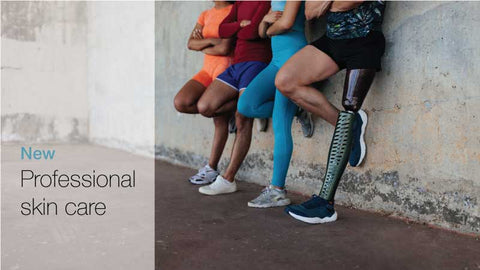Health Insurers Cut Back on Prosthesis Coverage Over Medical Doubts
Reading Time: 7 minutes
In the US, access to prosthetic limbs for individuals with limb loss or limb difference has long been a controversial issue within the healthcare system. Private health insurance plans have historically exhibited inconsistencies in covering these essential medical devices, leading to significant financial burdens for those in need. Such was the experience of Michael Adams.

Adams, 51, has worn out numerous prosthetic legs since he lost his right leg to cancer four decades ago. He enrolled in a gold plan on the Colorado health insurance exchange that provided prosthetic coverage, including advanced microprocessor-controlled knees that he has relied on for many years. The microprocessor within the knee adjusts to various surfaces and slopes, and it stiffens when it detects movements that suggest the wearer is about to fall.
However, when his leg needed to be replaced last January after nearly five years of daily use, his new marketplace insurance plan denied it. The insurer claimed that the approximately $50,000 prosthetic with the electronic knee was not medically necessary, despite Colorado legislation granting that decision to the prescribing physician. Adams’ doctor has consistently recommended this type of prosthetic since he had employer-sponsored health coverage.
Adams, who lives in Lafayette, Colorado with his wife and two children, said that the electric prosthetic knee transformed his life. Going without it feels like going back to the basic wooden leg he used as a child.
A form of discrimination
People requiring joint replacement surgery generally face fewer obstacles in insurance coverage than those needing prosthetic limbs. According to the federal Agency for Healthcare Research and Quality (AHRQ), approximately 1.5 million knee and hip joint replacements were performed in US hospitals and affiliated facilities in 2021. In a 2020 analysis, the average cost for a hip or knee replacement without complications at leading orthopedic hospitals was reported to be just over $68,000. However, health insurance providers frequently negotiate lower prices.
For those in the limb loss community, this difference in coverage is seen as a form of discrimination.
The trade association for health plans, AHIP, has indicated that prosthetic coverage is typically provided when deemed medically necessary, such as restoring mobility or daily activities. However, according to Ashlie White, chief strategy and programs officer at the Amputee Coalition, the reality of prosthetic coverage from private insurers can widely vary.
While some plans may include coverage for basic prostheses, White notes that insurance companies often impose limitations on the types of covered devices and may set caps on what they will reimburse.
As of February 2024, over 5.6 million people in the U.S. are living with limb loss (2.3 million) and limb difference (3.4 million), as reported in a white paper “Prevalence of Limb Loss and Limb Difference in the United States: Implications for Public Policy.” And the number of people living with limb loss is expected to rise significantly due to an aging population and increasing amputations due to conditions such as trauma, diabetes, and other health issues.
AHRQ reports indicate that fewer than half of those with limb loss receive a prescription for a prosthetic device. Insurance companies may deny claims for prosthetic limbs by asserting that such devices are either not medically necessary or classified as experimental, even though advanced prosthetics, like microprocessor-controlled knees, have been in use for many years.
Loans and repossessions
Cain’s case played a crucial role in passing a Colorado law in 2000. The law mandates insurers to provide coverage for prosthetic limbs equivalent to that offered by Medicare, which includes a 20% coinsurance charge.
Since this legislation was enacted, around half of the states have passed “insurance fairness” laws to ensure equal prosthetic coverage, mirroring other medical services or specifically covering sports-related prosthetics. However, these regulations apply only to state-regulated plans, leaving over half of individuals with private insurance covered by plans not governed by state laws.
The Medicare program provides 80% coverage for prosthetic limbs, similar to its coverage for other medical services. However, a report from the Government Accountability Office released in October revealed that only 30% of individuals who lost a limb in 2016 received a prosthesis within the next three years.
Financial considerations play a significant role in this statistic. Regardless of their insurance coverage, many individuals often find themselves responsible for some of the costs associated with their prosthetic devices. According to White, this often leads to individuals entering into payment plans or even taking out loans to cover the expenses.
To address these concerns, the federal Consumer Financial Protection Bureau has suggested a new rule preventing lenders from seizing medical devices, including wheelchairs and prosthetics, from individuals who cannot repay their loans.
White emphasized the importance of these devices, stating that “it is a replacement limb.” She noted that her organization has encountered several instances of wheelchairs or prosthetic limbs being repossessed, which she described as “literally a punishment to the individuals.”
Adams ultimately paid a coinsurance cost of approximately $4,000 for his new prosthetic leg. This amount reflected his share of the negotiated rate for his leg's knee and foot portions but did not cover the typically expensive prosthetic socket, which he didn’t need to replace.
After appealing the decision, his insurer claimed it had made an administrative error and approved coverage for the prosthetic leg. Adams, a self-employed leadership consultant, knows he’s fortunate to be able to afford that 20%. But not everyone has that financial capability.
A prosthesis is not a luxury
Leah Kaplan was born without a left hand, and she has refrained from using a prosthesis for much of her life to avoid drawing extra attention to herself. However, a few years ago, she obtained a specialized prosthetic hand for biking. Her health insurance covered this prosthesis through her job in Spokane, Washington, where the 32-year-old assists individuals with developmental disabilities transitioning to the workforce.
Unfortunately, when she sought approval for a prosthetic hand to assist her with daily tasks, her insurance denied the request.
The myoelectric hand she wanted, which operates based on electrical impulses in her arm to facilitate movement, comes with a price tag exceeding $46,000—an expense she cannot manage.
Despite working with her doctor to appeal the insurance company’s decision, she has faced rejection three times. Kaplan said the insurer has questioned the medical necessity of the device. Her next option is to pursue an appeal with an independent review organization sanctioned by the state insurance commissioner’s office.
Kaplan asserts that a prosthetic hand is essential, not a luxury.
The prosthetic clinic has already ordered her device and crafted a customized socket to fit her arm, but she cannot use it until the insurance issues are resolved. The prolonged wait has left her feeling disheartened. “I’ve been waiting for this for so long,” she said.
The bottom line
Despite advancements in prosthetic technology and legislative efforts to ensure equitable access, many, like Adams and Kaplan, continue to struggle with inadequate insurance support. These coverage limitations have undoubtedly affected the mobility and overall quality of life of many individuals living with limb loss and limb differences.
As the number of individuals needing prosthetics grows, it becomes increasingly important for lawmakers, insurers, and healthcare providers to work together to address these disparities and ensure that all patients have access to the medical devices they need to lead fulfilling lives.










































































